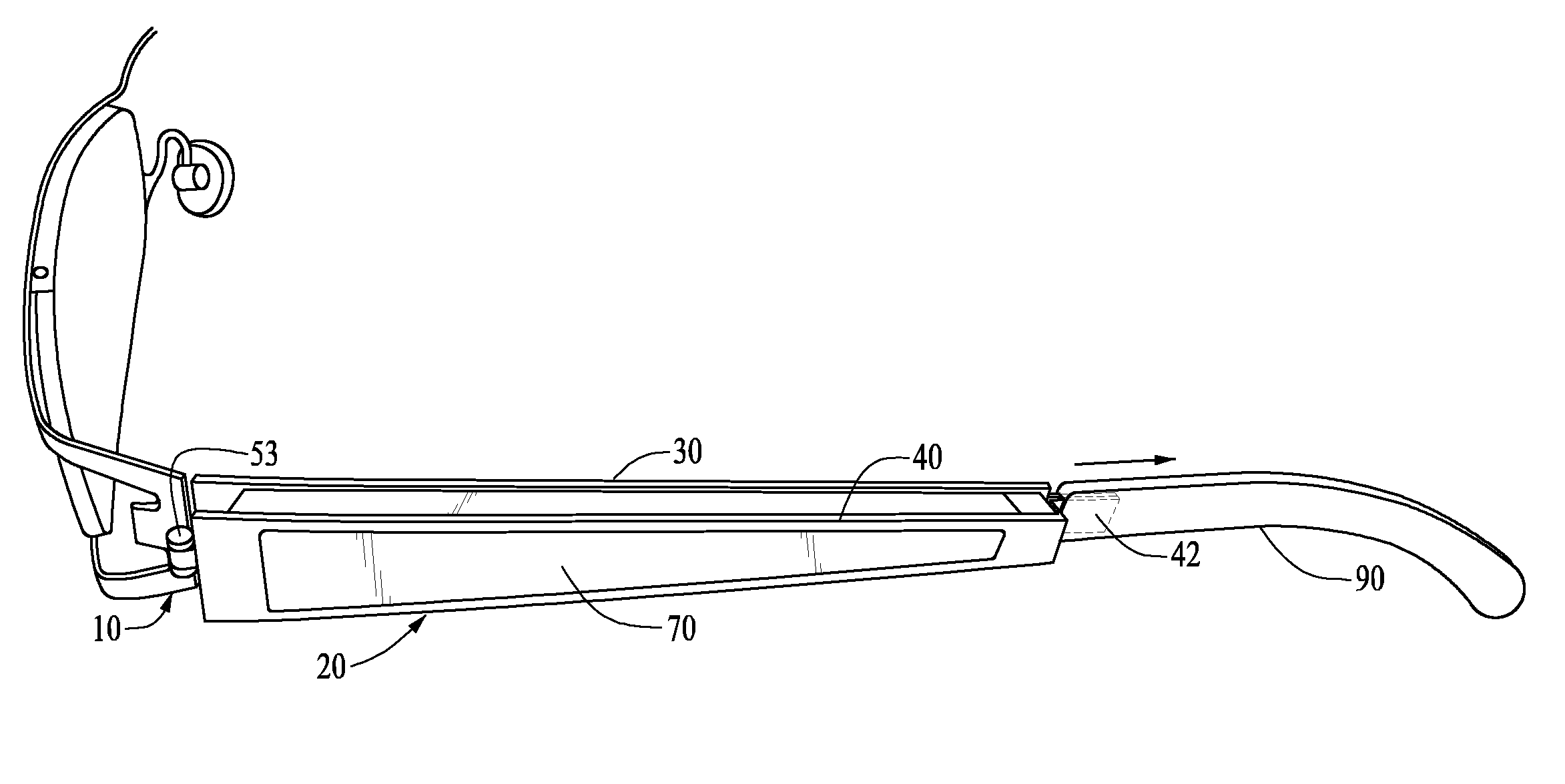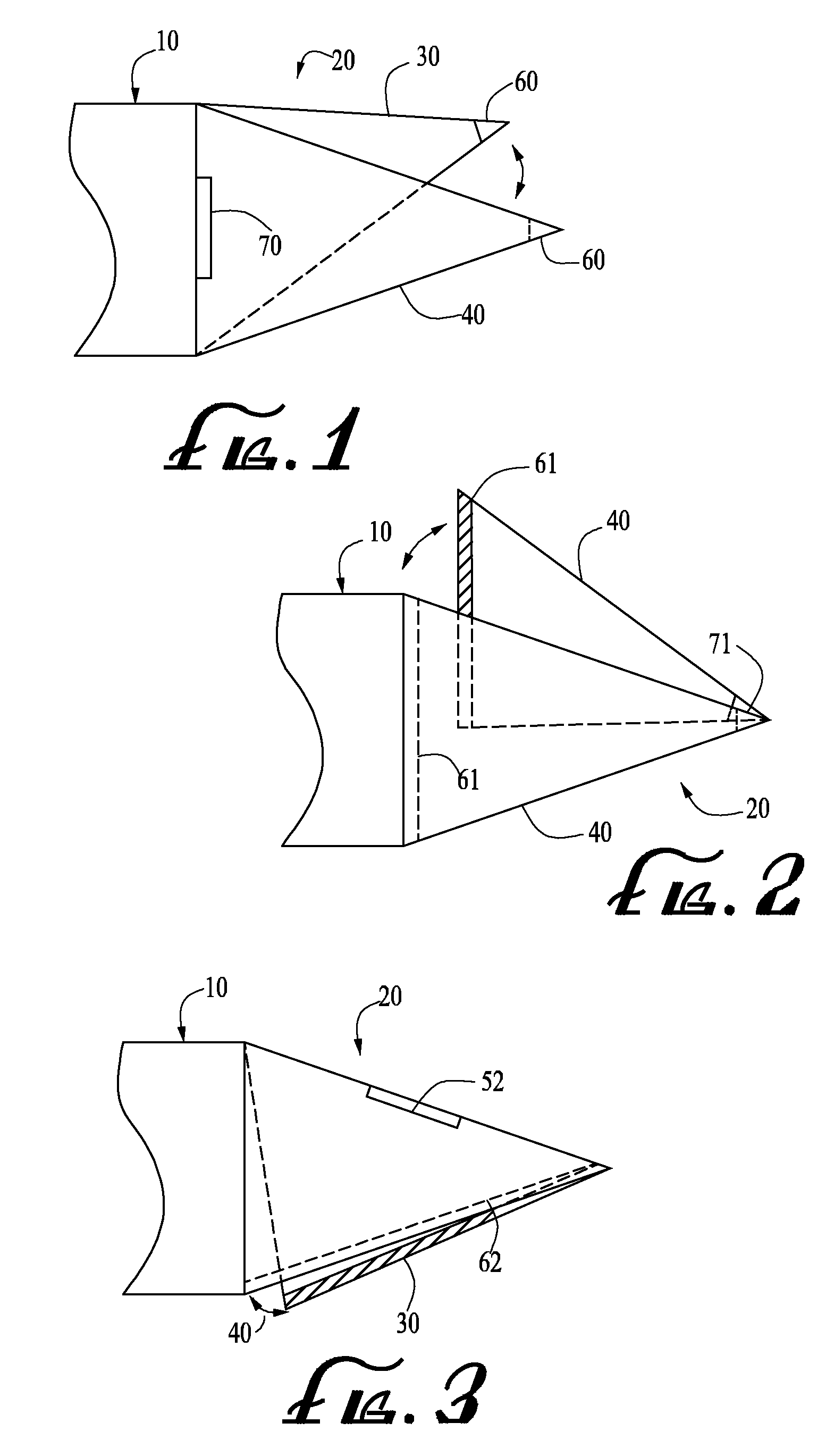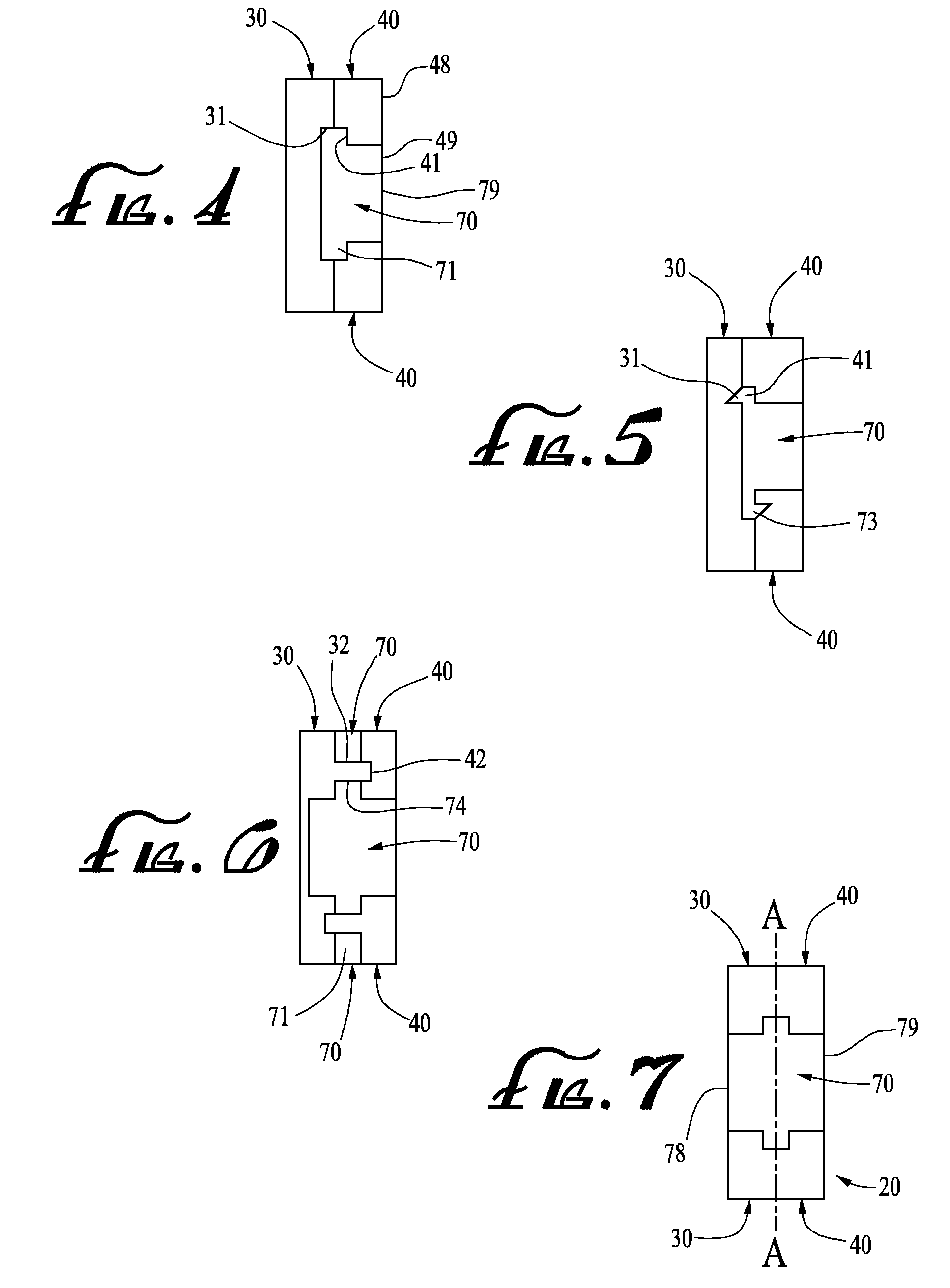Enclosure for Changing Eye Frame Designs
a technology for eye frame and design, applied in the field of eyewear, can solve the problems of less viewable space for decorative inserts, less eyeglass design and construction, and magnets severely limit the design and construction of eyeglasses, and achieve the effects of reducing the risk of eyeglasses falling off, and reducing the risk of falling o
- Summary
- Abstract
- Description
- Claims
- Application Information
AI Technical Summary
Benefits of technology
Problems solved by technology
Method used
Image
Examples
Embodiment Construction
[0033]The invention is for a pair of eyeglasses having temple frame designed to securely hold an interchangeable temple insert. Preferred embodiments of the present invention will now be described in detail with reference to the appended drawings, in which like elements are denoted with the same reference numerals.
[0034]FIG. 1 is an enlarged side perspective view of a lens frame and a temple frame in accordance with a first preferred embodiment of the present invention. As shown, a lens frame 10 is connected to a temple frame 20. The temple frame 20 consists of an inner plate 30, located proximate to the eyeglass wearer's head, and an outer plate 40. The inner plate 30 and the outer plate 40 are joined by a hinge 50 at an end of the temple frame 20 proximate to the lens frame 10. At the opposite end of the temple frame 20, the inner plate 30 and the outer plate 40 are joined by an attachment apparatus 60.
[0035]FIG. 2 is an enlarged side perspective view of a lens frame and a temple ...
PUM
 Login to View More
Login to View More Abstract
Description
Claims
Application Information
 Login to View More
Login to View More - R&D
- Intellectual Property
- Life Sciences
- Materials
- Tech Scout
- Unparalleled Data Quality
- Higher Quality Content
- 60% Fewer Hallucinations
Browse by: Latest US Patents, China's latest patents, Technical Efficacy Thesaurus, Application Domain, Technology Topic, Popular Technical Reports.
© 2025 PatSnap. All rights reserved.Legal|Privacy policy|Modern Slavery Act Transparency Statement|Sitemap|About US| Contact US: help@patsnap.com



